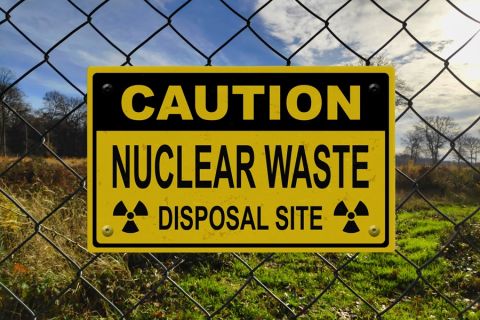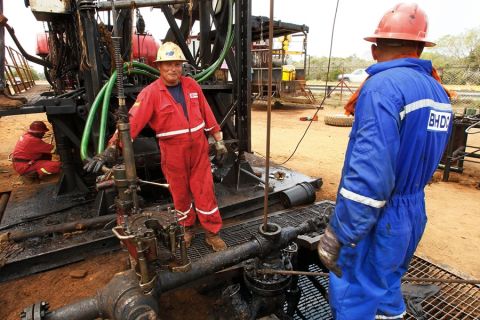- The Appalachian oil services market is stabilizing but at low levels of demand.
- Regional drilling rig utilization is at 25%.
- The outlook is dim for 2016, though contractors see future hope as regional production slows from low drilling levels.
Too much of a good thing? That might be the case when it comes to oilfield services in Appalachia. The region offers a world-class resource opportunity for natural gas and associated products with astonishing well productivity thanks to the adaptation of high-density completion techniques.
Appalachia reflects the classic conundrum in the eternal question of which came first, the chicken or the egg. The chicken is the enormous productive capacity in the region. The egg is the ability of midstream infrastructure to get that gas out of the field, get it processed and get it to new markets.
Until that situation is resolved, Appalachian oilfield vendors will be challenged by capacity overhangs in drilling, well stimulation and workover services. Rig counts are down 77% from the peak. Indeed, the only drilling contractors who appear to be working are those finishing long-term contracts. Pricing for drilling rigs has fallen 16% year-to-date in 2016 to about $15,000 per day for the benchmark Tier I 1,500-hp AC-VFD workhorse rig. Several regional drilling contractors have either shut in operations or, in the case of some mom and pop operations, gone out of business.
The latest commodity price collapse extinguished any hope for an improving oilfield services market in 2016. The enormous productivity of new Appalachian gas wells means that many operators have no plans for active field work in 2016.
The lean economic environment has produced a “back to basics” mindset, which means slickwater fractures, plug-and-perf completions, closer stage spacing and greater proppant loading as the industry fine-tunes high-density fracture stimulation techniques.
The representative Appalachian well features a 2,286-m (7,500-ft) lateral with roughly 35 stages spaced 61 m (200 ft) apart. Operators are pumping an average 7 million pounds of bulk commodity sand to stimulate the lateral. Per stage pricing for well stimulation appears to have bottomed at a little more than $41,000, although operators were negotiating directly with sand and chemical providers to pursue additional cost reductions to fracture-stimulate a well.
Meanwhile, service providers are painfully adjusting capacity to match demand. Regionally, the pressure pumping fleet was estimated at 731,000 in hydraulic horsepower in mid-first-quarter 2016, which was off 16% in 90 days. Similarly, the number of well stimulation crews working in the region fell to 30, down six from late 2015.
Other adjustments include a slight increase in the percentage of lower cost vertical wells while the percentage of zipper fractures, a proxy for batch completions, remains at 61%, suggesting a healthy backlog of drilled-but-uncompleted wells. Operators are discussing refracks, though few have been initiated.
What will it take for the market to turn? Bumpersticker simplicity boils it down to higher commodity prices. Oil prices need to rise above $50, according to Appalachian contractors participating in the Hart Energy field-level surveys, though some well stimulation activity on drilled-but-uncompleted liquids-rich wells will occur at $45.
However, natural gas remains king in Appalachia with the economics favoring dry gas wells at this point in the cycle. For that, operators need natural gas prices above $2.75, which is almost a dollar more than Henry Hub prices at press time. Of note, the view on natural gas is gradually swinging from the belief the gas market would remain oversupplied until the end of the decade to recognition that natural decline rates are starting to kick in with lower drilling levels.
In this environment, contractors will take good news anywhere they can find it.
Recommended Reading
New BOEM Regulations Raise Industry Decommissioning Obligations by $6.9B
2024-04-15 - Under new regulations, the Bureau of Ocean Energy Management estimates the oil and gas industry will be required to provide an additional $6.9 billion in new financial assurances to cover industry decommissioning costs.
BWX Technologies Awarded $45B Contract to Manage Radioactive Cleanup
2024-03-05 - The U.S. Department of Energy’s Office of Environmental Management awarded nuclear technologies company BWX Technologies Inc. a contract worth up to $45 billion for environmental management at the Hanford Site.
Laredo Oil Settles Lawsuit with A&S Minerals, Erehwon
2024-03-12 - Laredo Oil said a confidential settlement agreement resolves a title dispute with Erehwon Oil & Gas LLC and A&S Minerals Development Co. LLC regarding mineral rights in Valley County, Montana.
DOE Considers Technip, LanzaTech For $200MM ‘Breakthrough’ Technology Award
2024-03-25 - The U.S. Department of Energy funding will be used to develop technology that turns CO2 into sustainable ethylene.
US Decision on Venezuelan License to Dictate Production Flow
2024-04-05 - The outlook for Venezuela’s oil industry appears uncertain, Rystad Energy said April 4 in a research report, as a license issued by the U.S. Office of Assets Control (OFAC) is set to expire on April 18.





